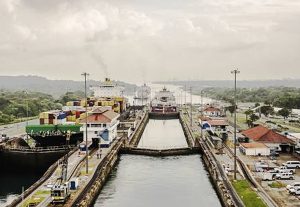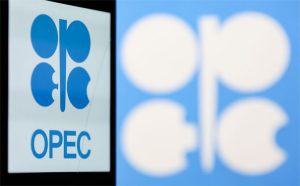
By Kaieteur News
GEORGETOWN
Petroleumworld 11 29 2021
Despite no approval for Yellowtail…
Should the Stabroek Block partners receive the requisite government approvals for its fourth project called Yellowtail in a timely fashion, start-up is poised to commence as early as 2025. But following this, Guyana should expect to see one floating, production, storage, and offloading (FPSO) vessel being added to its offshore armada every year. This is according to Hess Corporation’s Chief Executive Officer (CEO), John Hess.
During a recent interview, the Hess boss said the partners already have a line of sight for the first seven ships while adding that the Uaru-Mako discoveries could possibly support the fifth development on the block.
Readers would recall that the Mako-1 discovery was announced in December 2019. The well encountered approximately 164 feet (50 metres) of high-quality oil-bearing sandstone reservoir and was drilled in 5,315 feet (1,620 metres) of water.
On April 27, the company announced that it had hit pay at Uaru-2 encountering approximately 120 feet (36.7 metres) of high-quality oil-bearing reservoirs including newly identified intervals below the original Uaru-1 discovery. The well was drilled in 5,659 feet (1,725 metres) of water and is located approximately 6.8 miles (11 kilometres) south of the Uaru-1 well.
The CEO said, “A lot of our exploration and appraisal programme is going to give us further clarification on what ship six is, what ship seven is, and probably what ship eight is …But the visibility to get to those 10 ships is not a matter of if but when.” He added, “We continue to see the potential for at least six floating, production, storage and offloading vessels producing on a gross basis greater than one million barrels of oil per day by 2027.”
He said too, that as each ship comes online, the company stands to benefit at least, US$1B annually in profits from each ship. In the meantime, he said the partners are working towards approval for the Yellowtail project which is set to be Guyana’s largest oil-producing field.
It was only last month that Kaieteur News reported that development costs for the Yellowtail project are poised to exceed US$9B or GY$1.8 trillion.
ExxonMobil’s subsidiary, Esso Exploration and Production Guyana Limited (EEPGL) which is the operator of the Stabroek Block, had said costs are expected to be higher, since there would be a greater number of development wells and associated drilling costs when compared to its Payara project which will also cost Guyana $1.8 trillion.
According to project documents, Yellowtail will consist of drilling approximately 41 to 67 development wells (including production, water injection, and gas re-injection wells); installation and operation of Subsea, Umbilicals, Risers, and Flowlines equipment; installation and the operation of a Floating Production Storage and Offloading (FPSO) vessel in the eastern half of the Stabroek Block; and— ultimately—project decommissioning.
The FPSO will be designed to produce up to 250,000 barrels of oil per day. The initial production is expected to begin by the end of 2025 early 2026, with operations continuing for at least 20 years.
The project is expected to employ up to 540 persons during development well drilling, approximately 600 persons at the peak of the installation stage, and 100 to 140 persons during production operations.
______________
By Kaieteur News
kaieteurnewsonline.com / 11 27 2021
Copyright© 1999-2021 Petroleumworld or respective author or news agency. All rights reserved.
We welcome the use of Petroleumworld™ (PW) stories by anyone provided it mentions Petroleumworld.com as the source.
Other stories you have to get authorization by its authors. Internet web links to http://www.petroleumworld.com are appreciated.
Petroleumworld welcomes your feedback and comments, share your thoughts on this article, your feedback is important to us!











